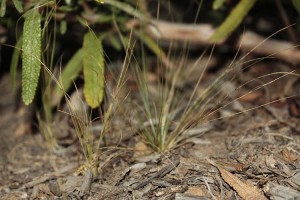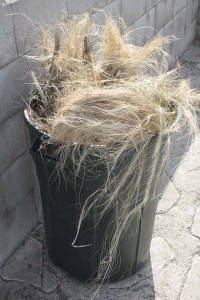When life gives a crappy cellphone video camera, well, you make crappy cellphone videos. Not that the world needs any more of them but I’m such a narcissist that I’m sure these are only crappy in their total lack of technical polish. I’m sure they’ll be going viral any day now…
A trip to Walter Anderson Nursery a few months back netted this find, a wind-activated updating of the classic pink lawn flamingo.
And in keeping with the motif of things blowing in the wind…
At graduation for Pomona College last month they held the festivities outdoors, under old, old sycamores growing in the riparian lawn habitat. Overhead they’d set up blue and white banners that on this mild morning were being set in motion by the breeze.
Two months ago I stopped off briefly at Chapman University, where I passed by this lovely planting of the very lovely and equally evil (in my book) Mexican feather grass, Nassella tenuissima. (Why is this plant evil? you may ask. I was out weeding this morning, and pulled up a dozen or so seedlings from plants that I pulled up a decade ago. It’s also undergoing review for consideration as an invasive exotic species in California. Notice their planting is surrounded by concrete, but I’m sure they have the stuff coming up in irrigated spots nearby. (Maybe this started out as one plant?)) The California native purple three-awn, Aristida purpurea, would do very much the same thing, only with more of a delicate purple tinge. It reseeds, too, but for me not nearly so prolifically as the plant in the video.



